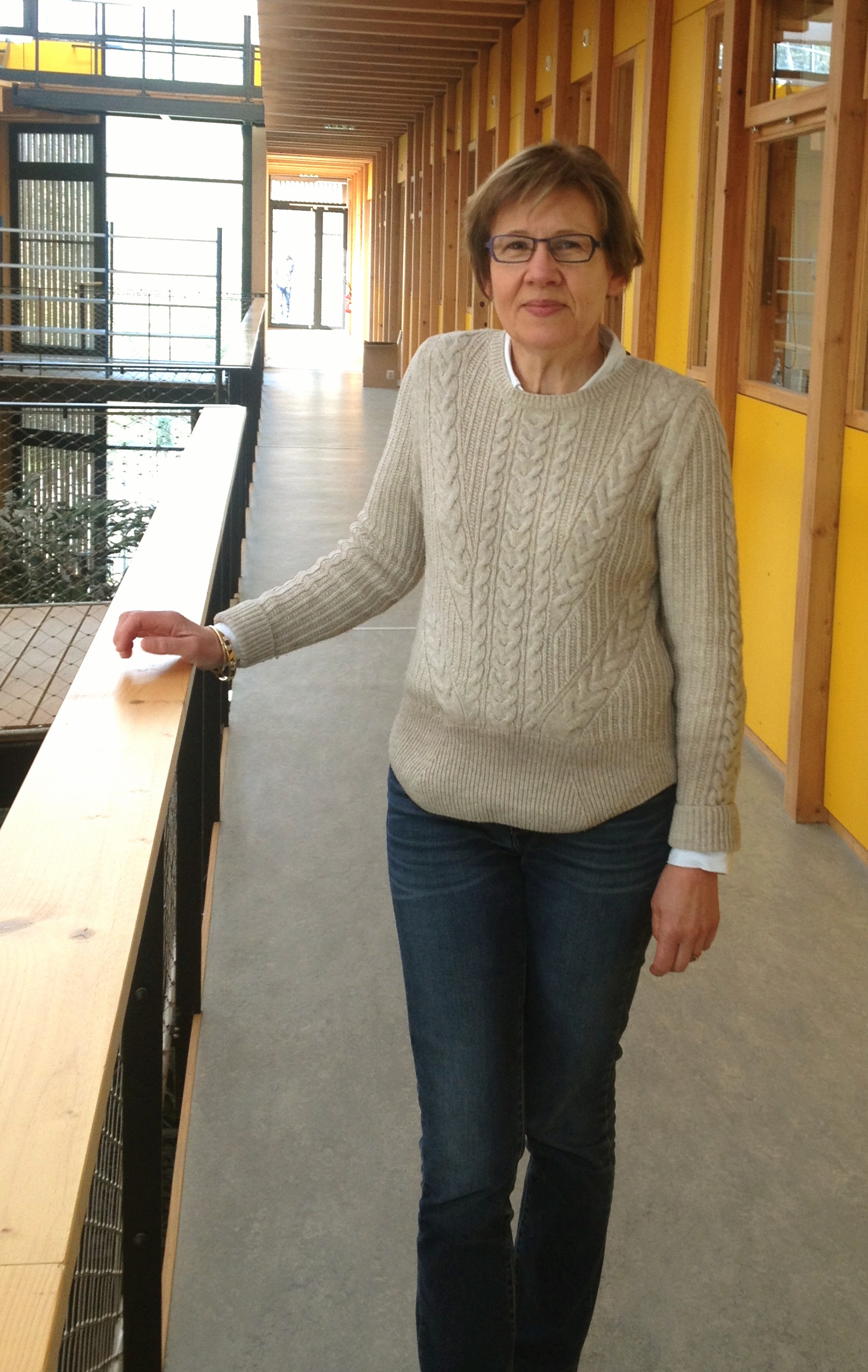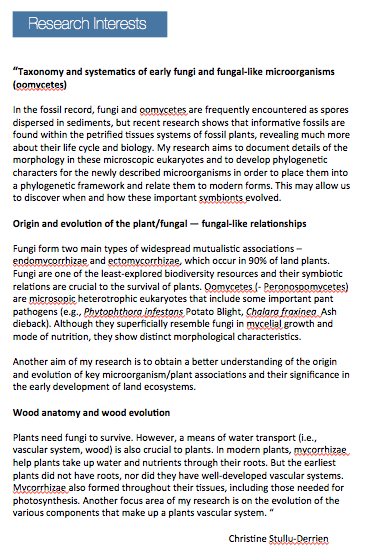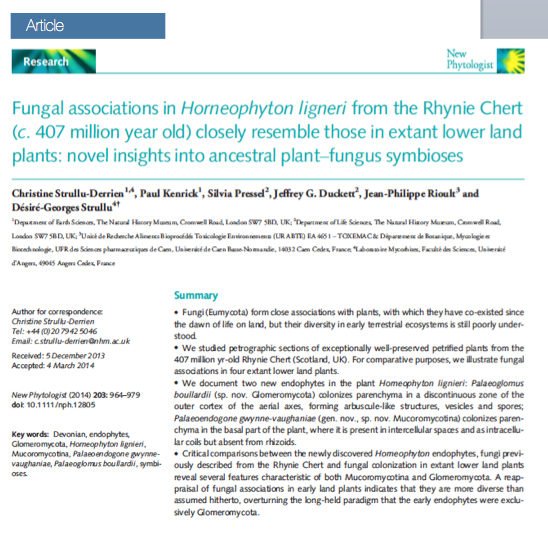Christine Strullu-Derrien
Visiting researcher
24 July 2015
___________________________
Christine Strullu-Derrien is a visiting researcher from the Museum of Natural History in London working for 6 months with the IAM research unit with support from LabEx ARBRE. Her research focuses on the origin and evolution of Fungi and fungi-like microorganisms (oomycetes) associated with plants. She is interested in developing a multidisciplinary approach to bridge palaeomycology (study of fossil fungi), phylogenetics and genomics. Another focus of her research is the evolution of the various components of the vascular system in plants. Through this coupling of paleobotany and phylogenomics, Christine brings a modern vision to a discipline which is in the process of redefining itself thanks to developments in laser microscopy and synchrotron microtomography.
Below is the interview Christine granted us recently.
______________________________________________________________________________________
Where are you from originally? Where do you spend most of your time now?
I am originally from Brittany, and later I moved to Angers. At the moment, I split my time between Nancy and London.
Why did you decide to pursue a career in research?
In 2005, I realized that paleobotany was being studied with new perspectives and that very few people were interested in the studies concerning the origin and evolution of the fungal-plant relationships using the fossil records (certainly no one in France). So I decided to pursue a career in research on this topic.
When did you first begin to take in interest in environmental science? What motivated you to pursue your doctoral studies paleobotany?
I first began to take in interest in environmental science in high school. I am interested in both geology and botany — paleobotany is a perfect combination of the two. Studying evolution is particularly interesting to me.
What brought you here specifically to work at INRA with Francis Martin and his team working on genomes and tree and microorganism interactions?
I am working at INRA (i) to strengthen the links between Francis Martin’s Lab and the Plant Evolution Lab at the Natural History Museum in London (directed by Paul Kenrick), and (ii) to explore the possibility of developing multidisciplinary research in the area of fungal-plant interactions.
Could you comment on the idea of collaboration in science? How has that played a role in your own work?
I always work in collaboration. When you are working in cross-disciplinary research, it is essential to work with colleagues who are experts in disciplines that are not your own, or have established expertise in techniques necessary for the research (the newest, most sophisticated techniques) to render the very best interpretation of your fossil.
What would you name as the major scientific issues – or next frontiers – for paleobotany?
In my view, next frontiers for paleobotany/paleomycology will include bridging these disciplines with plant/fungal genomics. We need to understand how interactions evolved in the context of environmental changes in order to understand how they function today and how they will function in the future. The two disciplines working together can help to address these key questions.
You spend a lot of time working in London, at the renowned Natural History Museum, no less. What is that like to work among the most important palaeobotanical collections in the world?
The collections in London are absolutely fascinating. I spend hours working on thin sections that were made 130-100 years ago. These are beautiful specimens of exceptionally preserved fossils.
I also find the work atmosphere to be a total pleasure!
You have had an illustrious career – at the very least, a very interesting one. You are recognized for forging new ideas in an area you feel passionate about (in itself, a noble accomplishment). Could you talk about what it means to be a woman working in science?
I am just happy to have had the chance to make discoveries which have allowed me to forge new ideas and I am grateful to Francis Martin who has given me the opportunity to advance these ideas by working with him and his team. This is my vision of what it means to work in science ..
In your most recent paper published in New Phytologist (March 2014) (Fungal associations in Horneophyton ligneri from the Rhynie Chert (c. 407 million year old) closely resemble those in extant lower land plants: novel insights into ancestral plant-fungus symbioses. New Phytologist.), you describe documenting two distinct fungal associations (new to science) in the Rhynie Chert (C. 407 million year old) plant Horneophyton lignieri, naming one Palaeoendogone gwynne-vaughniae to honor the prominent British botanist, mycologist and woman’s activist, Dame Helen Gwynne-Vaughan who took substantial risks in forging her own career in science in the early 19th century. Among other things, she wrote a series of substantial papers in the 1920’s and 1930’s on the cytology of fungi. Could you talk about how her life’s work may have influenced your own?
I wouldn’t say that her life’s work has influenced my own work but I admire Dame Helen Gwynne-Vaughan for her strength and for what she has achieved. It is why I wished to honor her. She believed that women could have successful careers in Science and she herself had an impressive career… working on Fungi! She also served in a non-combatant role during the First World War.

And lastly, where do you hope your science will lead you in the future (in the short or long term)? What advice would you give for someone who wants a career in science?
I hope to continue to make new discoveries that will help to further our understanding about how the complex plant-fungal relationships originated and continued to evolve.
My advice for people interested launching careers in research : be passionate about the science and enjoy working in collaboration.
_________________________________________________________________________






